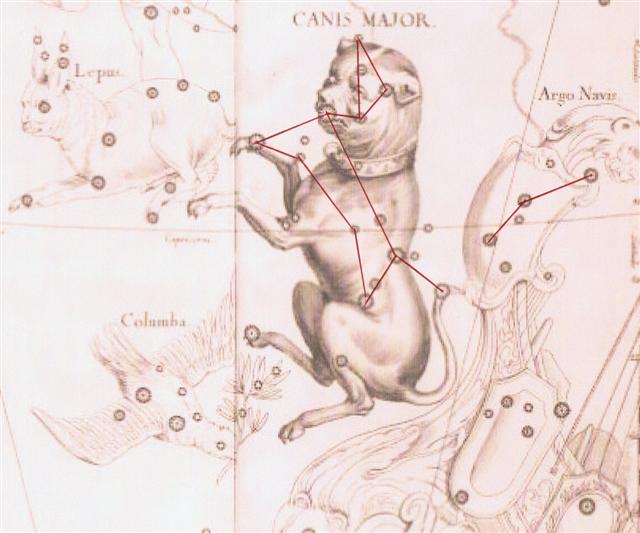From the date Al Tuwaibe' 1 to Murzim 1 (ruled by Canis Major) there are 3 * 13 = 39 days. A triplet of manu rere who have lost their eyes follow the triplet above, but first there is a group with 5 glyphs and a Rei in its center, in July 1:
 |
 |
 |
 |
 |
| Cb4-3 |
Cb4-4 |
Cb4-5 (468) |
Cb4-6 |
Cb4-7 |
| June 29 (181) |
30 |
July 1 |
2 |
3 (550) |
| Al Tuwaibe' 4 |
5 |
6 (46) |
7 |
8 |
The powerful hakaua in Cb4-3 seems to have worked because 3 days later there is a ua with a mata in front.
 |
 |
 |
 |
 |
| Cb4-8 |
Cb4-9 |
Cb4-10 (473) |
Cb4-11 |
Cb4-12 |
| July 4 |
5 |
6 (188) |
7 |
8 |
| Al Tuwaibe' 9 |
10 |
11 |
12 (52) |
13 |
The last day of the manzil ruled by Aldebaran is July 8. The heliacal rising of Aldebaran was in May 28 (day 148 in an ordinary year). July 9 (day 190 in an ordinary year) - 148 = 42 days. Sirius rose in June 30 (day 181 in an ordinary year), i.e. 181 - 148 = 33 days later than Aldebaran. But there are 39 days from Al Tuwaibe' to Murzim. The heliacal date for the star ruling Murzim ought to be July 6 (in an ordinary year), i.e. Wezen (δ Canis Majoris). 187 - 181 = 6.
Wezen marks the spine of the Great Dog, wheras Sirius is his nose:

We should remember that by counting forward in the G text we have indeed earlier located Sirius and Wezen 6 days apart:
 |
 |
 |
 |
| Gb6-17 (400) |
Gb6-18 |
Gb6-19 (*100) |
Gb6-20 |
| |
ν Puppis (99.2), ψ3 Aurigae (99.4) |
ψ2 Aurigae (99.5) |
ψ4 Aurigae (100.5), Mebsuta (100.7), Sirius (101.2), ψ5 Aurigae (101.4) |
| June 27 (178) |
28 |
29 |
30 |
| Al Tuwaibe' 2 (42) |
3 |
4 |
5 |
 |
 |
 |
 |
| Gb6-21 |
Gb6-22 |
Gb6-23 |
Gb6-24 |
| ψ6 Aurigae (101.7), τ Puppis (102.2), ψ7 Aurigae (102.4) |
ψ8 Aurigae (103.2) |
Alhena (103.8), ψ9 Aurigae |
Adara (104.8), ω Gemini (105.4) |
| July 1 (182) |
2 |
3 |
4 |
| Al Tuwaibe' 6 (46) |
7 |
8 |
9 |
 |
 |
 |
 |
| Gb6-25 (*106) |
Gb6-26 |
Gb6-27 |
Gb6-28 |
| Muliphein (105.8) |
Wezen (107.1) |
|
|
| July 5 (186) |
7h (106.53) |
7 |
8 |
| Al Tuwaibe' 10 |
11 |
12 |
13 (53) |
Should we imagine the powerful hakaua in Cb4-3 as a sign for Sirius, then we should look for Aldebaran in glyph 466 - 33 = 433:
 |
 |
 |
|
Cb2-17 (433) |
Cb2-18 |
Cb2-19 |
| May 27 |
28 |
29
(150) |
| Sheratan 11 |
12 |
13 |
But a star visible close to full moon in June 30 is located at the other end of the sky, a star which rose heliacally around day 181 + 182 = 363.
363 - 80 = 283 and 283 - 64 = 219. The searched for star could be Vega, which in G possibly is illustrated as the broad curve at top left in Ga8-15. Vega is like Sirius a very bright star:









































